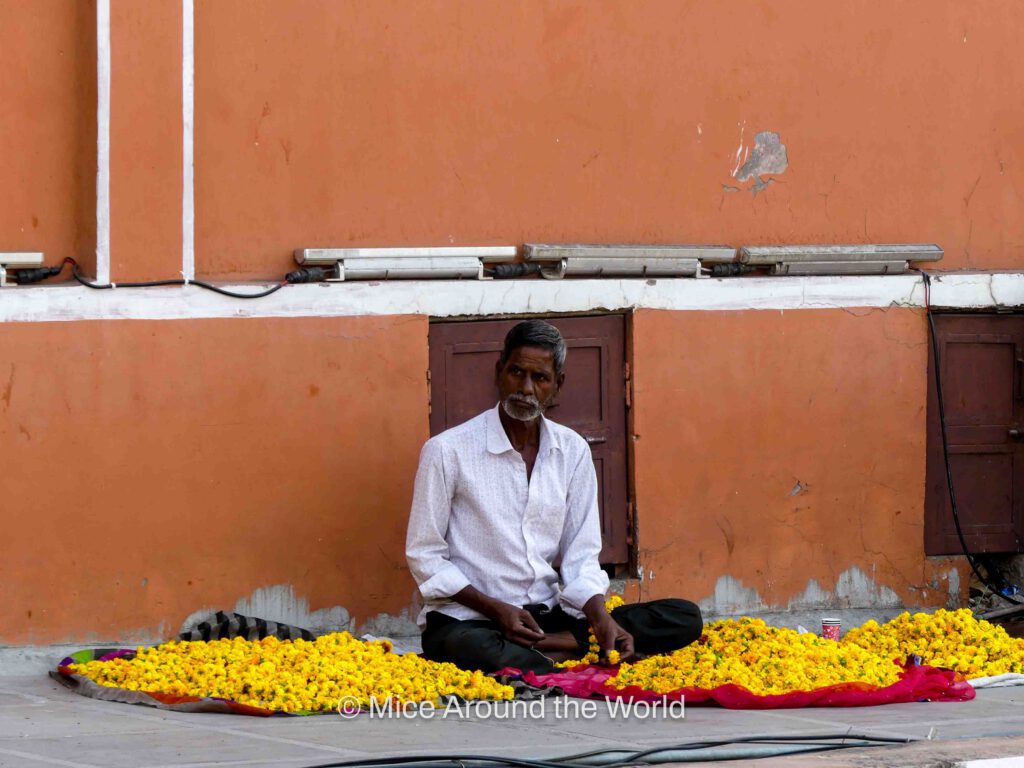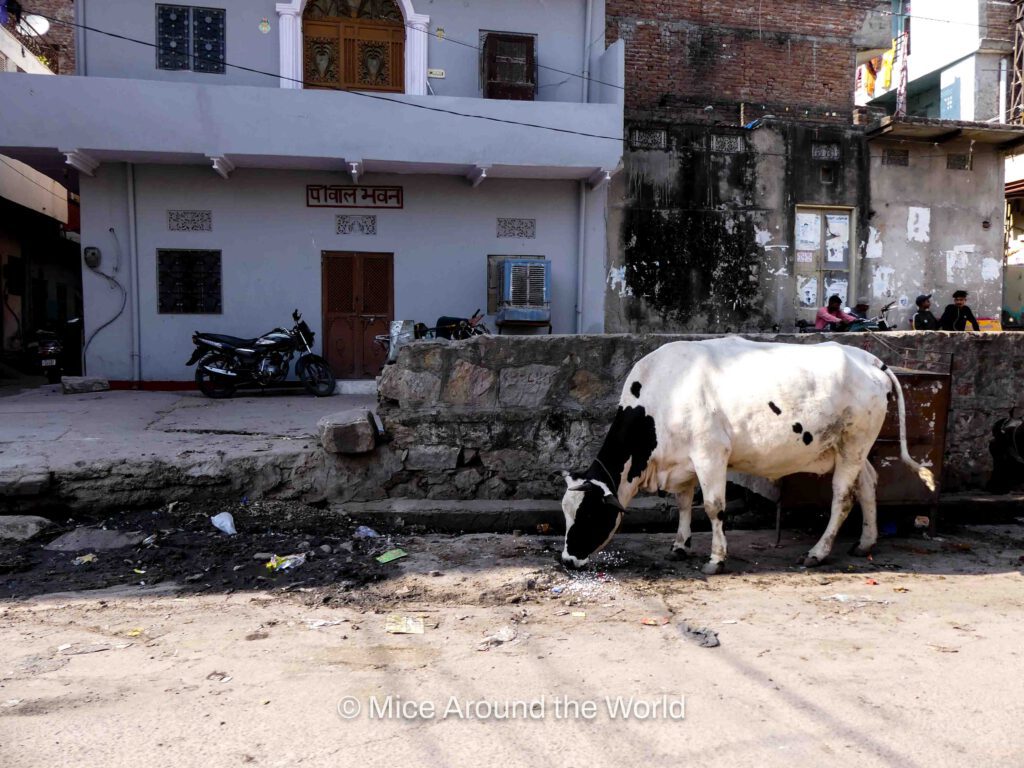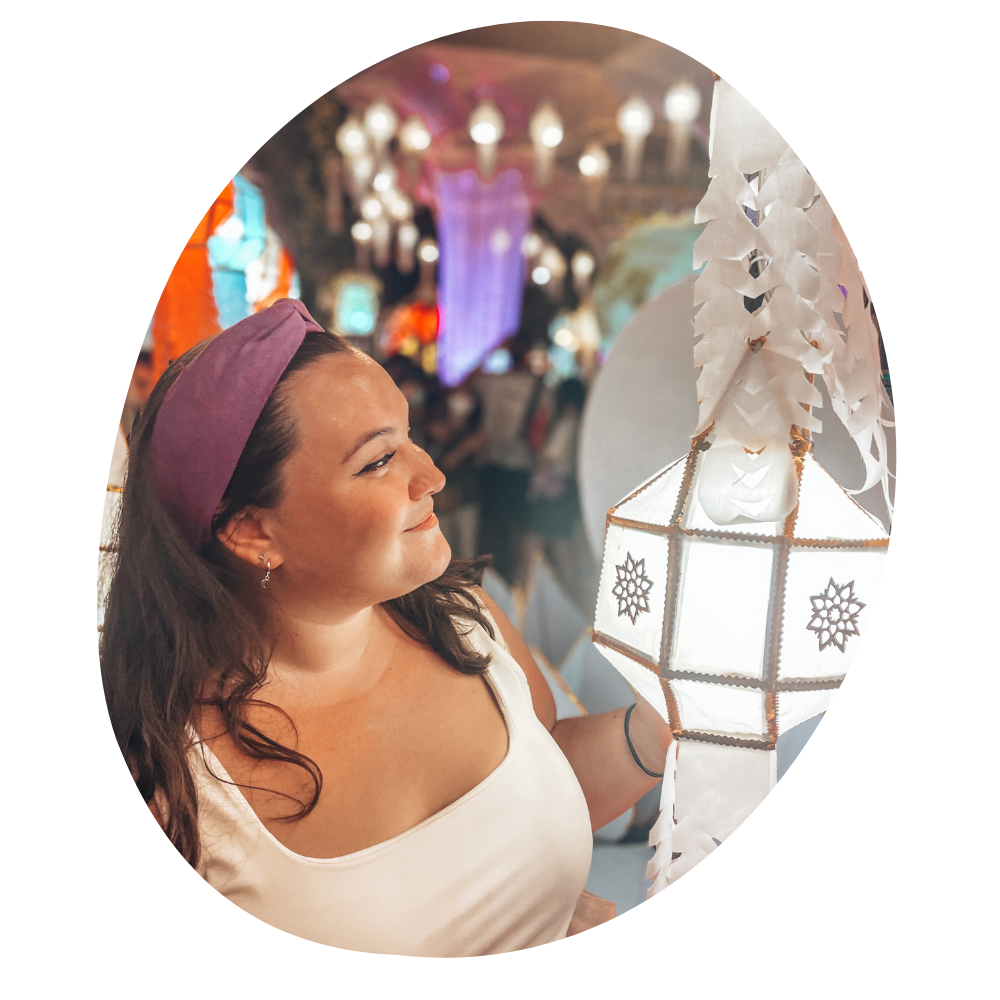Welcome to Jaipur! This ‘pink’ city is part of the ‘golden-tourist-triangle’ Delhi-Agra-Jaipur and this is for a reason. Jaipur is the capital of Rajasthan, one of India’s most beautiful states to visit because it provides a true reflection of the rich Indian culture. The city serves as a gateway to other interesting cities in Rajasthan, such as Delhi, Ajmer (and Pushkar), Agra, Jodhpur, Jaisalmer and Udaipur.
The nickname ‘pink city’ is because of the pink painted buildings in the city centre. Jaipur has lots to offer on a cultural, culinary and historical level. We recommend staying for around five days in Jaipur to take in all this vibrant city has to offer. We made a list of the best things to do, see and experience in mesmerizing Jaipur, India to make your visit truly unforgettable.
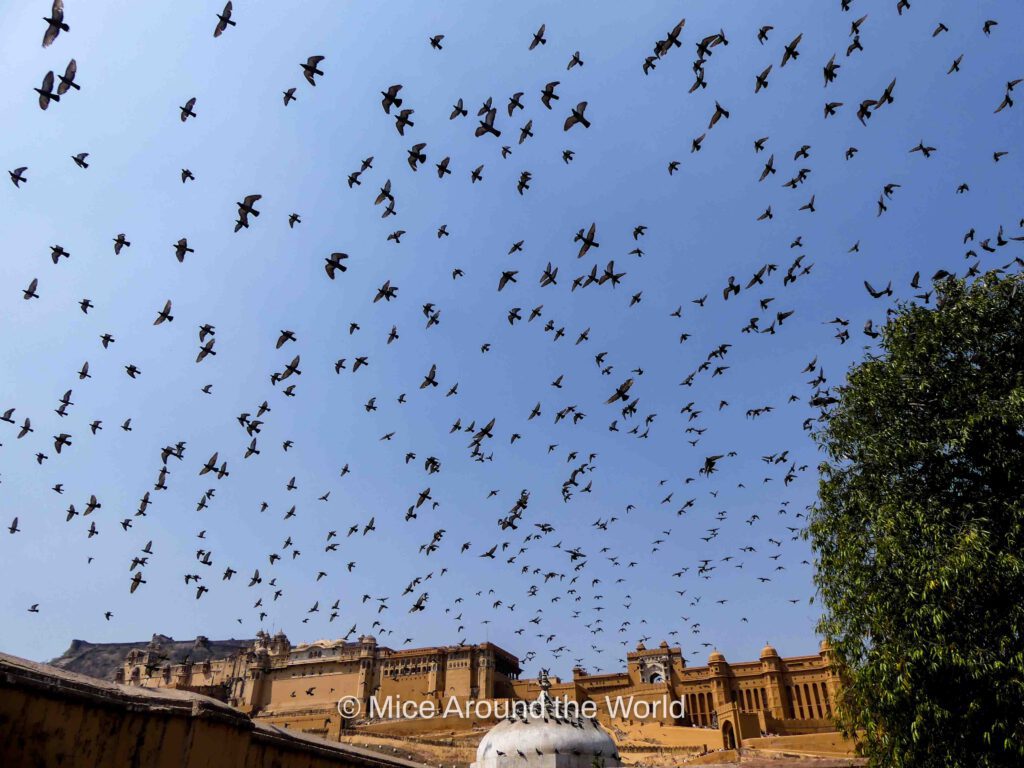
We invest a lot of time and energy in our articles and write them with sincere love. By clicking the links in this blog for your purchases, you pay exactly the same amount, but we receive a small percentage. Thank you for supporting us. ?
Looking for something?
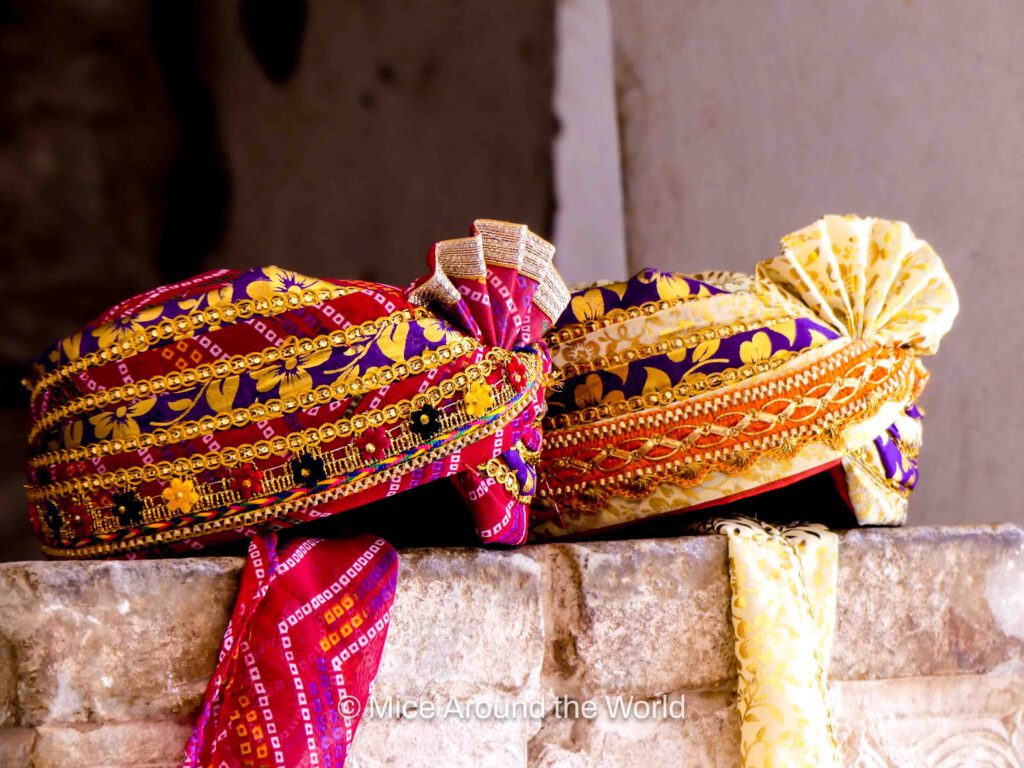
The best time to visit Jaipur is during the winter months, from October to March. The weather is nice and not too hot or cold. Winter in Jaipur brings comfortable temperatures ranging from around 15 °C to 25 °C during the day. The evenings can get a little colder. There’s not much rain and there are clear blue skies daily. During these months there are interesting festivals like Diwali and Holi happening. Expect a lot more tourism during these months, especially around festivities.
You can still visit India in the summer months, but expect a lot of heavy rainfall (really heavy!) and high humidity, with high temperatures from 25 °C to 35 °C on average. Our experience however is that around 40 °C is not uncommon.
Rickshaw
Lorem Ipsum
Public Transport
Lorem Ipsum
Taxi
Lorem Ipsum
Take a Picture with the world’s oldest camera
A relatively unknown but a really fun experience is the photographer using a more than 160-year-old camera to take pictures of people who are interested in this kind of old photography. The photographer is located just further down the road, where Hawa Mahal Palace is located in Jaipur’s city centre. The man handling the camera is extremely friendly and likes to tell you how he inherited the camera from his father and ancestors. After preparing the camera, you have to sit quietly for a while on a bench with lots of other people watching the scene. It takes a while for the photo to be developed and after some chit-chat you receive both the photo and the negative. The cost of your own black-and-white picture with a 160-year-old camera is 500₹. (€5,50).
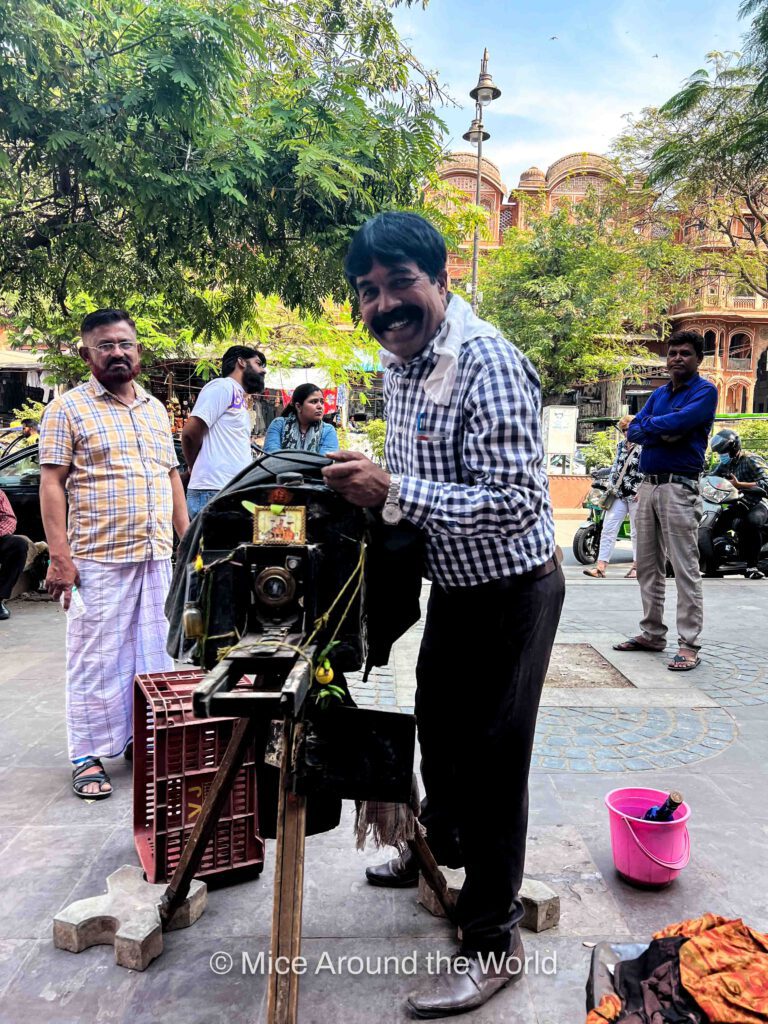


Visit the Amer Fort & Jal Mahal
Jaipur is probably most famous for the Amer Fort and the Jal Mahal or ‘water palace’ located roughly 10 kilometres north of Jaipur. The Amer Fort is a great symbol of Rajput style and architecture, and derives its name from the combination of red sandstone and marble that was used to construct the fort. The Amer Fort consists of numerous courtyards, gardens, gateways, walls to climb and tunnels to walk through, each part constructed with the use of arches, ornaments and other decorations, making it a site perfectly fit for your Instagrammable Rajasthani photoshoot.
We recommend visiting the Amer Fort as early as possible to escape both the crowds and the heat. Entering the enormous site can be quite challenging because of all the people offering souvenirs, food, and elephant rides. The last one is unethical to us, we advise you not to engage in elephant riding.
The Amer Fort is easy to reach by taxi, preferably an Uber, as you don’t need to go through rounds of negotiations with stubborn tuk-tuk drivers all waiting outside the Fort. The cost of the Amer Fort is ₹500 (about €5.50) for foreigners and ₹150 (about €1.65) for students providing a valid student card. Estimate a total duration of around two hours for your visit, depending on the length of your photoshoot and souvenir shopping.
Tip: To skip waiting lines and avoid waiting in the heat, it is possible to buy your tickets online here.
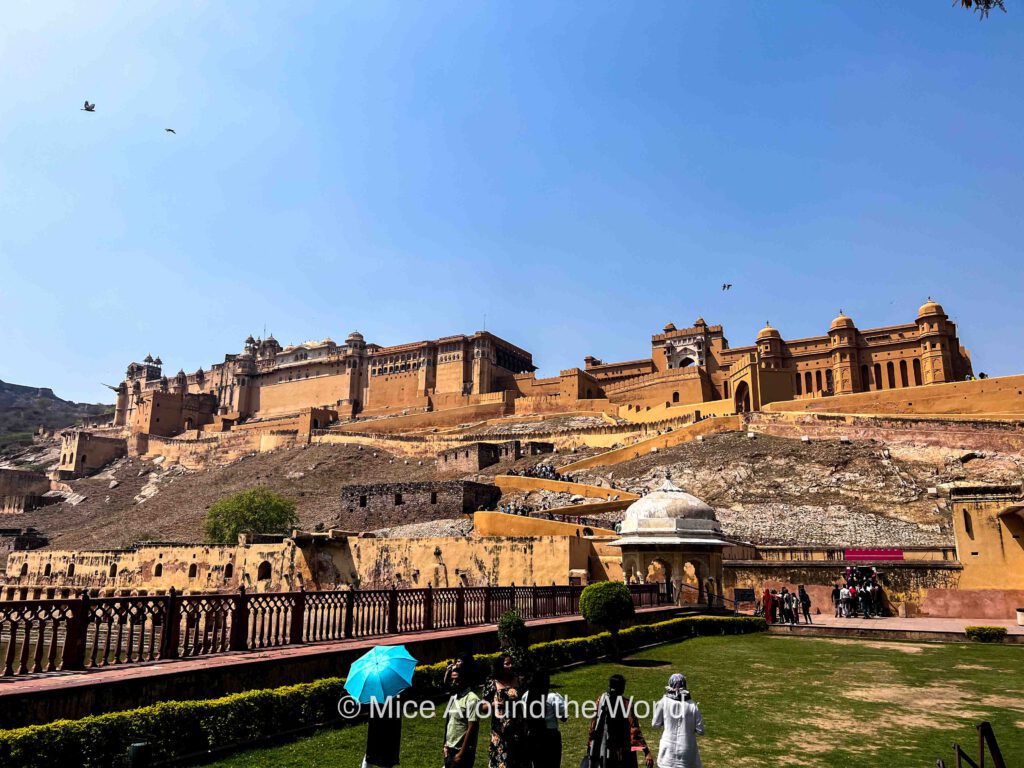
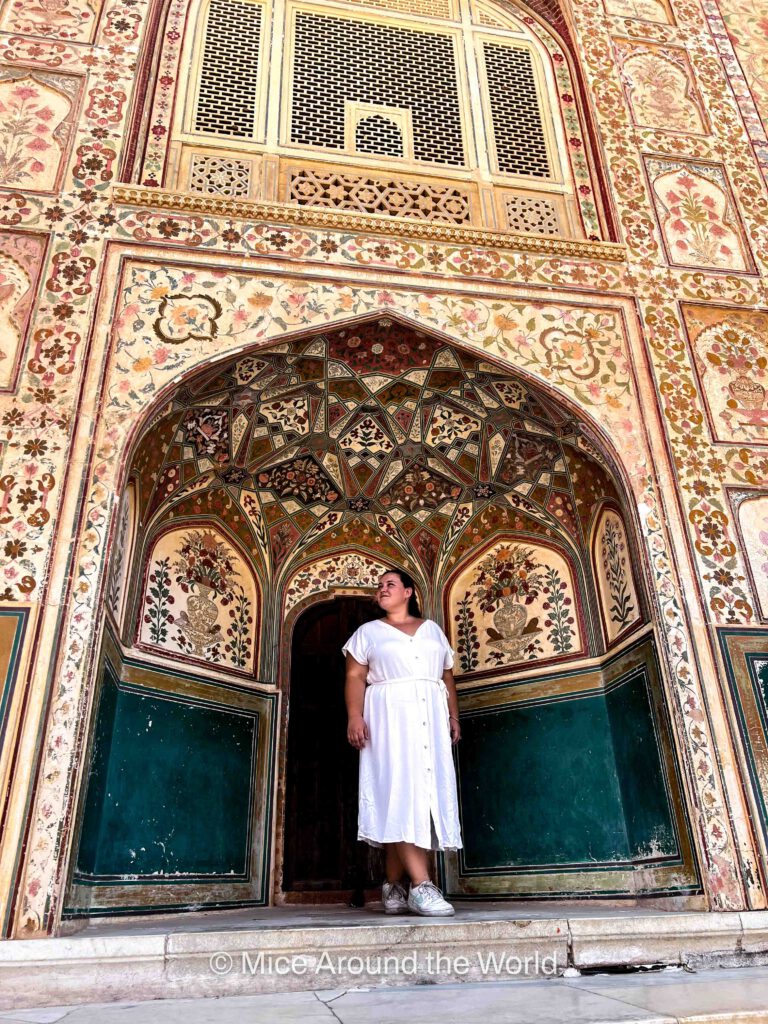
Jahal Mahal or the ‘water palace’ as it is commonly referred to is located on the road from Jaipur city centre to the Amer Fort in the middle of the Man Sagar Lake. As the Amer Fort, the Jahal Mahal is a stunning example of Rajput style architecture dating back to 1699 under the reign of Maharaja Jai Singh II. The palace is five-stories high and built out of red sandstone, and is only reachable by boat. Frequent restoration work is done to prevent damage to the palace’s plaster work. Jahal Mahal is a real picturesque attraction in Jaipur.
Fun fact: Did you know the Jal Mahal was used in the James Bond film ‘Octopussy’?
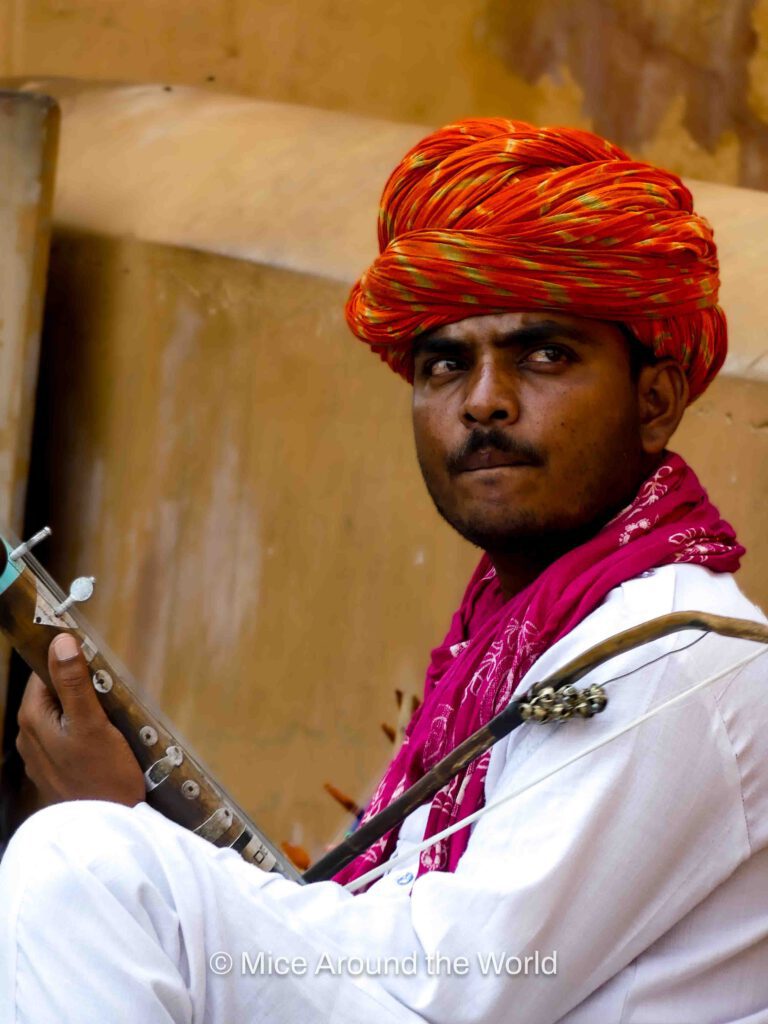
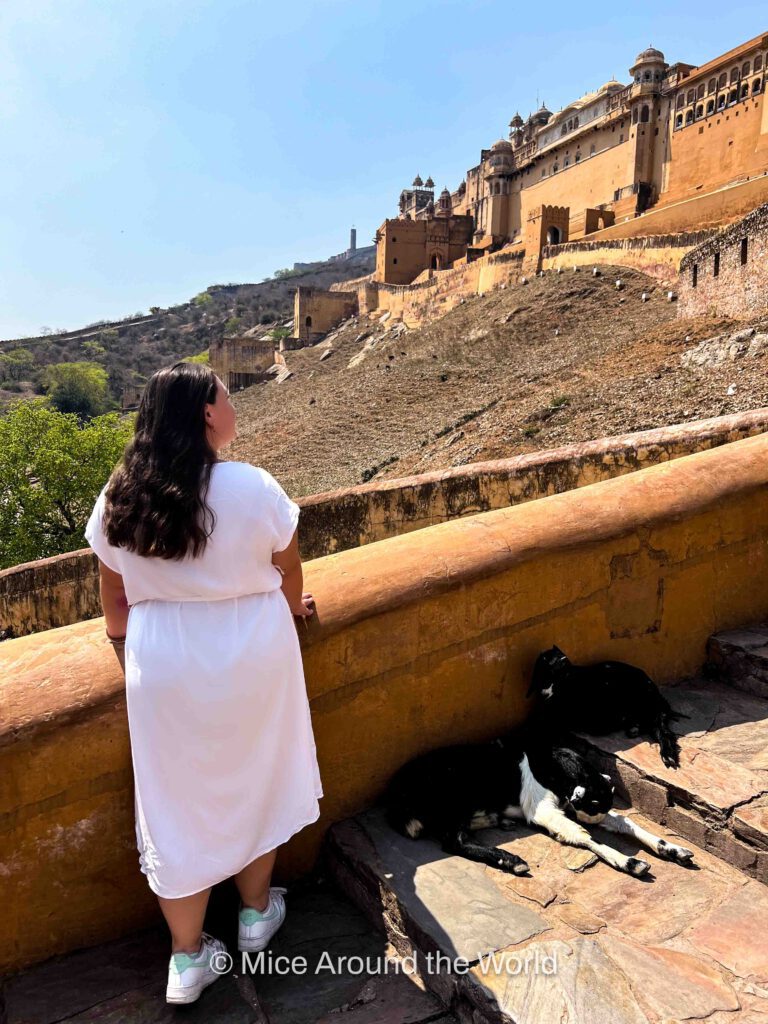
Stroll past the ‘Palace of the Wind’ or Hawa Mahal
Hawa Mahal is often named ‘‘Palace of the Wind’ because it is a five-story building which has many windows and a beehive-patterned front ever facing the windy side. Hawa Mahal is a stunning tourist attraction in Jaipur, present on every tourist brochure. It’s attracting lots of visitors, all wanting to take the iconic picture with the Hawa Mahal. The wall is built in red and pink sandstone, contributing to the image of Jaipur as the ‘Pink City’. This stunning piece of Rajput architecture was demanded to be built by Maharaja Sawai Pratap Singh in 1799. It is possible to visit Hawa Mahal as it has a museum attached to it. The entrance fee is ₹200 (around €2.20). Tickets can be bought here.
Tip: can’t get enough of all the amazing things to see in Jaipur but limited in time? Book a Jaipur Full Day City Tour and visit Hawa Mahal, Amber Fort & City Palace with a guide to save time.
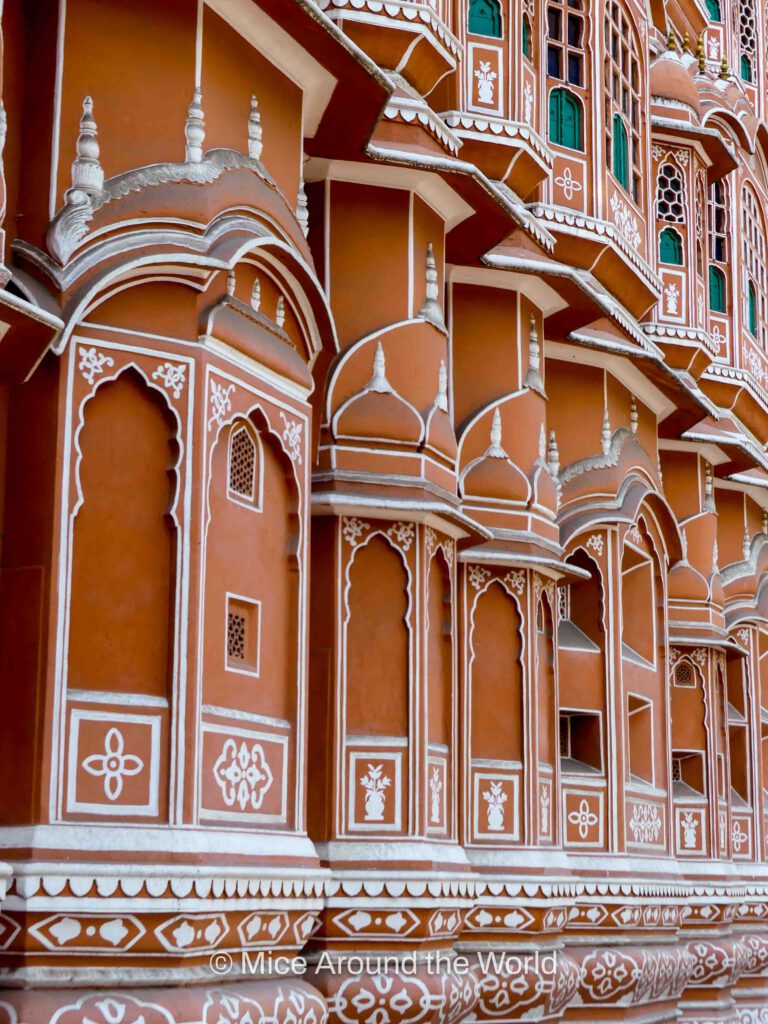
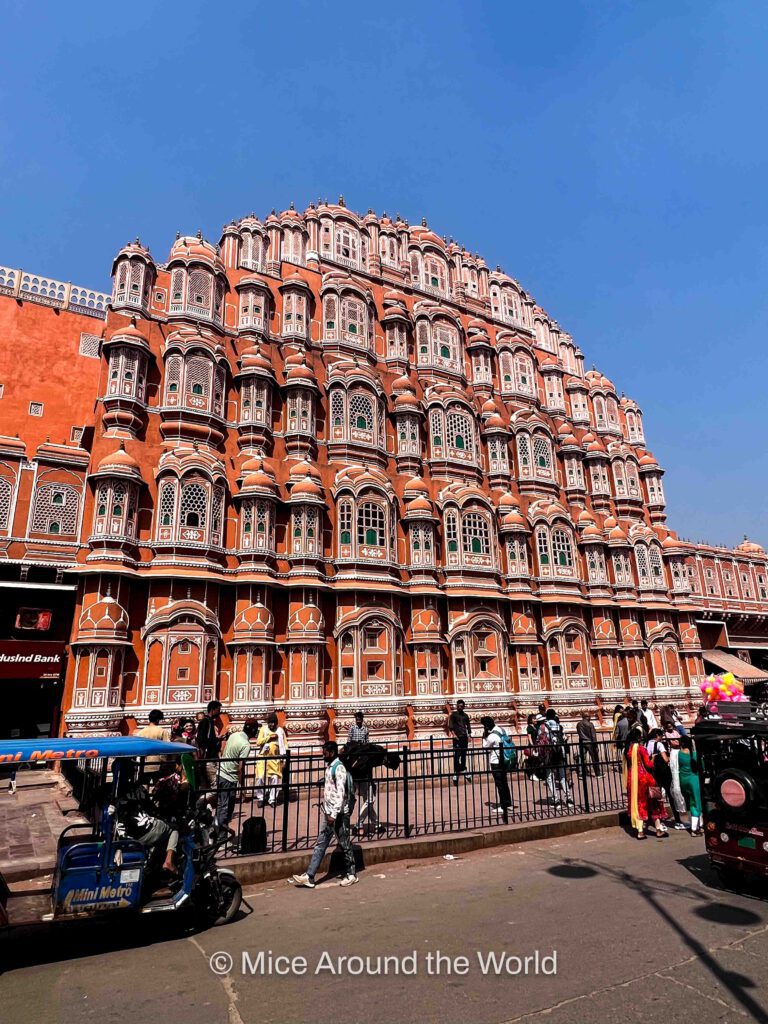
Go to a Bollywood film at the Raj Mandir Cinema
One of the best experiences in India is a visit to the Raj Mandir Cinema in the heart of Jaipur. This beautifully decorated film theatre with a merengue-shaped auditorium opened in 1976 and has seen many premieres of Hindi ‘Bollywood’ films. You may not be familiar with Bollywood movies, but this huge film industry comes from India’s second city, Mumbai.
We visited the Raj Mandir cinema twice, and although we couldn’t understand a word of what was being said because there are no subtitles, it was so much fun (mostly because of the great dance songs in every Bollywood movie). It is normal for Indian visitors to shout at the villain, cheer for the good guys, having phone calls while sitting next to you, dance and talk or just leave if they don’t like the film. We saw Munna Michael (2017) and Tu Jhoothi Main Makkaar (2023) and both films were fantastic experiences that we remember vividly. Sometimes we cannot resist playing Bollywood music!
Tickets for the cinema start at only ₹110 (about €1.22) for a ruby seat, ₹170 (about €1.88) for an emerald seat, ₹300 (about €3.32) for a diamond seat and ₹400 (about €4.43) for a premium seat. We chose the emerald seats and had a great spot. You can buy tickets and select seats here. Oh, and don’t be surprised if you see a bat flying by, that’s very common.

Hike up to Nahargarh Fort
Nahargarh Fort is a fortress located on the edge of the Aravalli Hills overlooking Jaipur. Together with the Amer Fort, it forms a defensive ring around the city that’s stopping attacking armies. Nahargarh Fort is less known than the Amer Fort, but its views over the city are more spectacular. It is possible to walk around several courtyards and on top of the walls. Especially during sunset, the views are spectacular as Jaipur is slowly illuminated at night.
It is possible to either have a steep walk up directly from the city centre or take a taxi which uses a detour to reach the back of the Nahargarh Fort. When walking up to the fort, people will offer you a motorbike ride for a small fee if you feel tired or hot. The fortress can be seen throughout the whole city as it is built on top of the hills surrounding it. The entrance fee for the fort is ₹200 (about €2.20) for foreigners and ₹100 (about €1.10) for students. If you’re interested in history, booking a guided tour in the Nhargarh Fort is recommended.
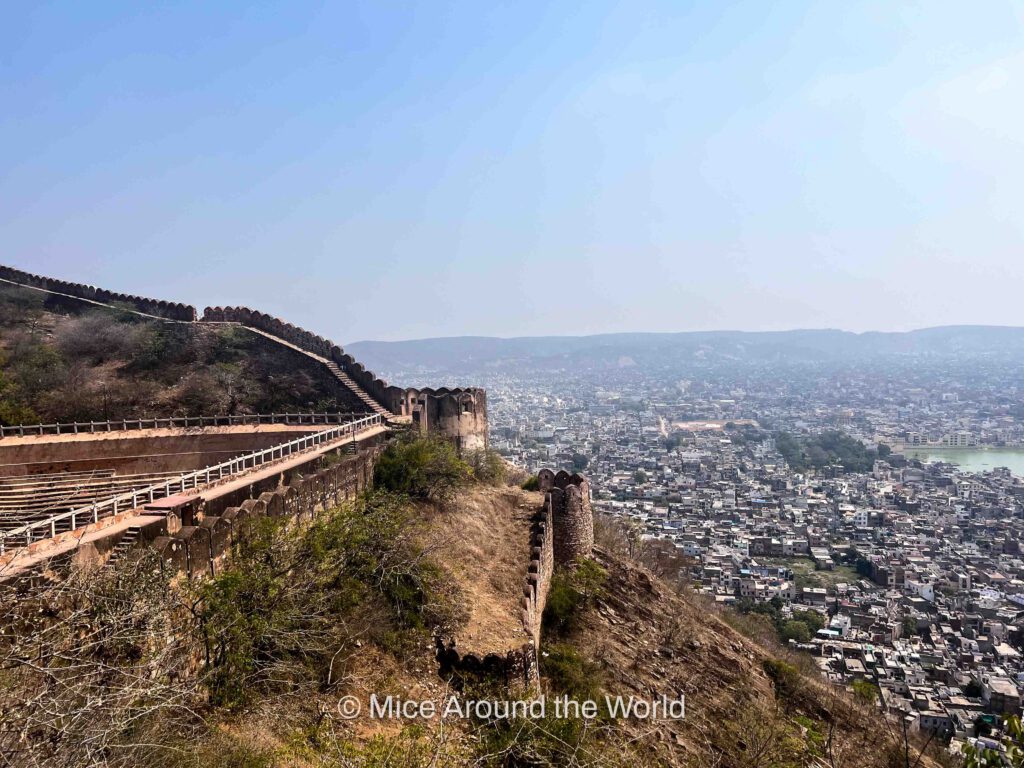
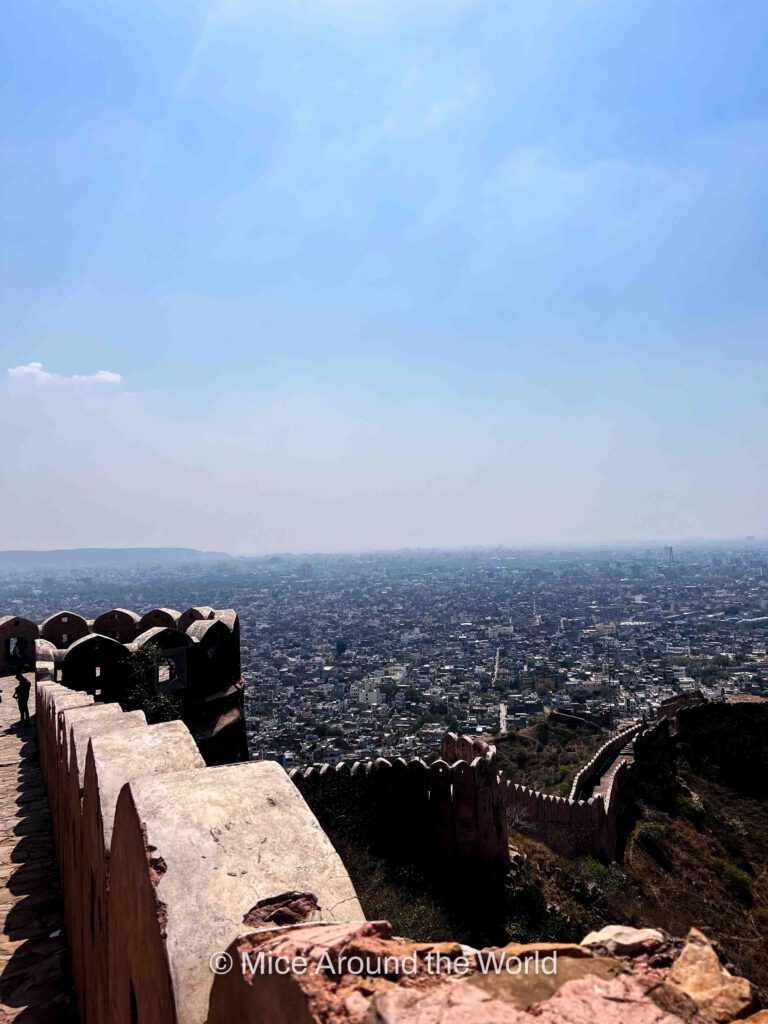
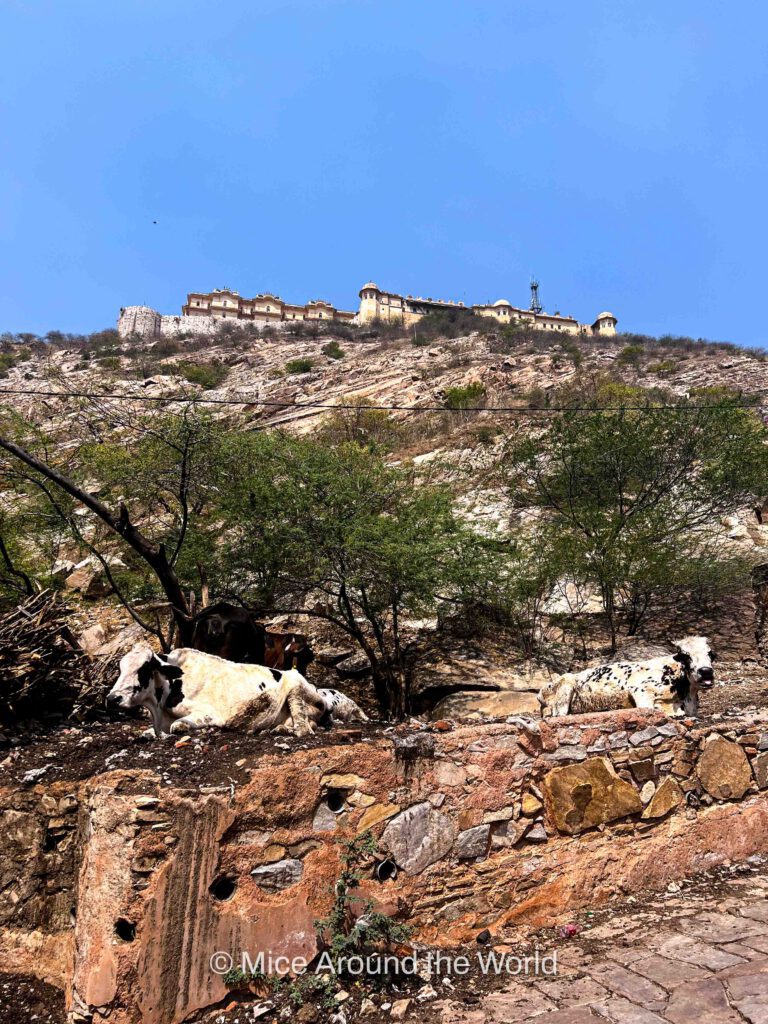
Try a lassi at Lassiwala
One of the drinks you have to try in India is lassi, a yoghurt-based drink consisting of yoghurt, water, spices and sometimes fruits. The best-known variations of the drink are ‘sweet lassi’ and ‘salt lassi’. Lassi is often ordered as a side drink to ‘cool the mouth’ when having spicy Indian dishes such as Thali and a variety of curries. Lassiwala is a small café dedicated to the drink in Jaipur’s city centre. It has been named the best in town and not without reason: their lassi is sweet, delicious and served in a clay cup (the cups are recycled afterwards). A ‘small’ cup of lassi is very cheap and costs only ₹40 (€0.44).
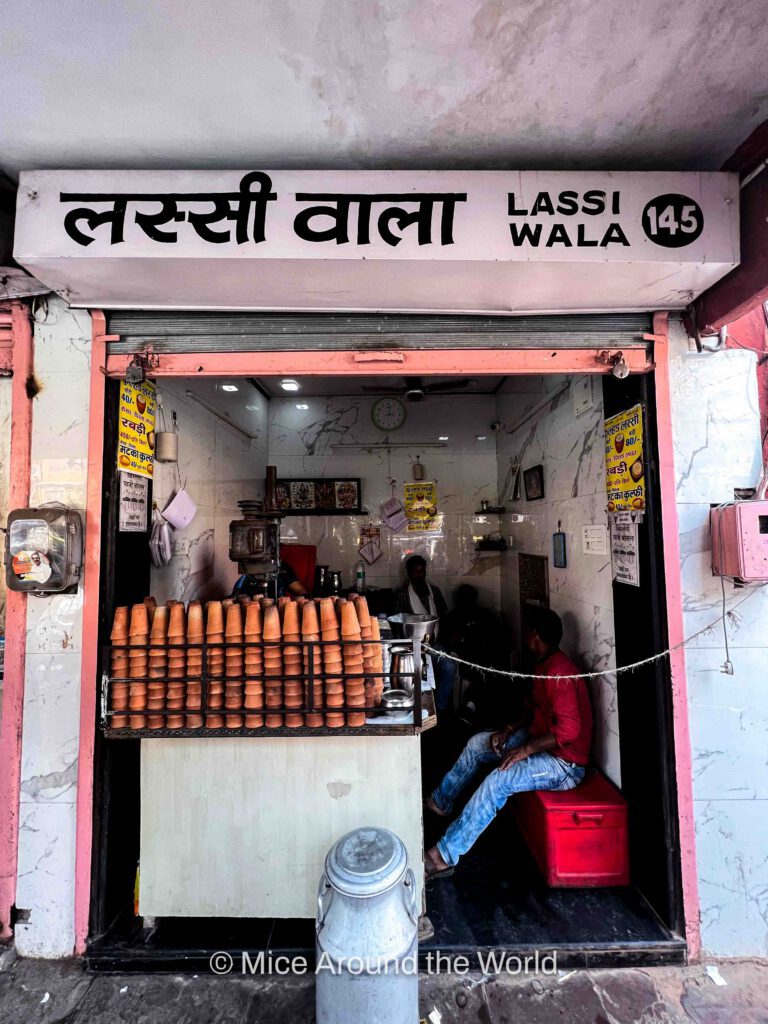
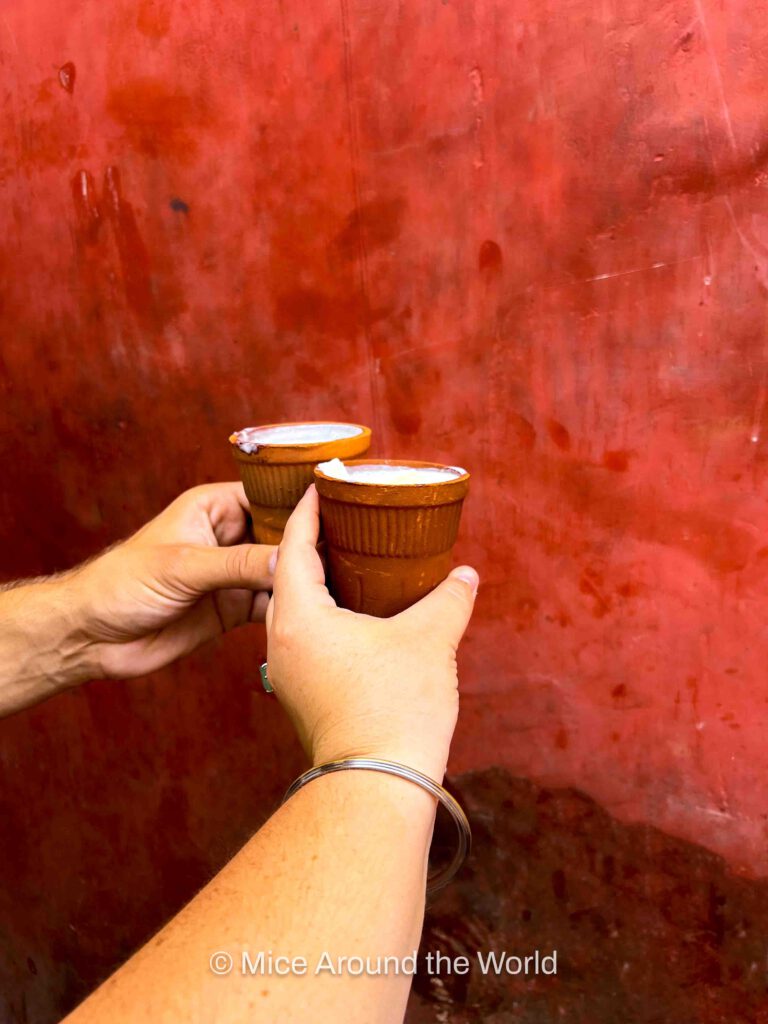
Explore the Chandpol Bazaar
The Chandpol Bazaar is located next to Lassiwala and near Hawa Mahal and serves as a perfect place to buy your Indian souvenirs. The most beautiful clothes like saris (silk, cotton, or linen dresses for women) and shawls, jewellery and a variety of other souvenirs, can be bought here. The souvenirs are really nice and nothing like other Asian countries. It’s all quite cheap, but be careful to not be charged double or triple as a tourist. Don’t be afraid to negotiate, but always be respectful and agree on a fair price. The Chandpol Bazaar offers a unique Indian shopping experience. It’s hard to peacefully look around, but your sweetest items that remind you of Jaipur and India are bought here.
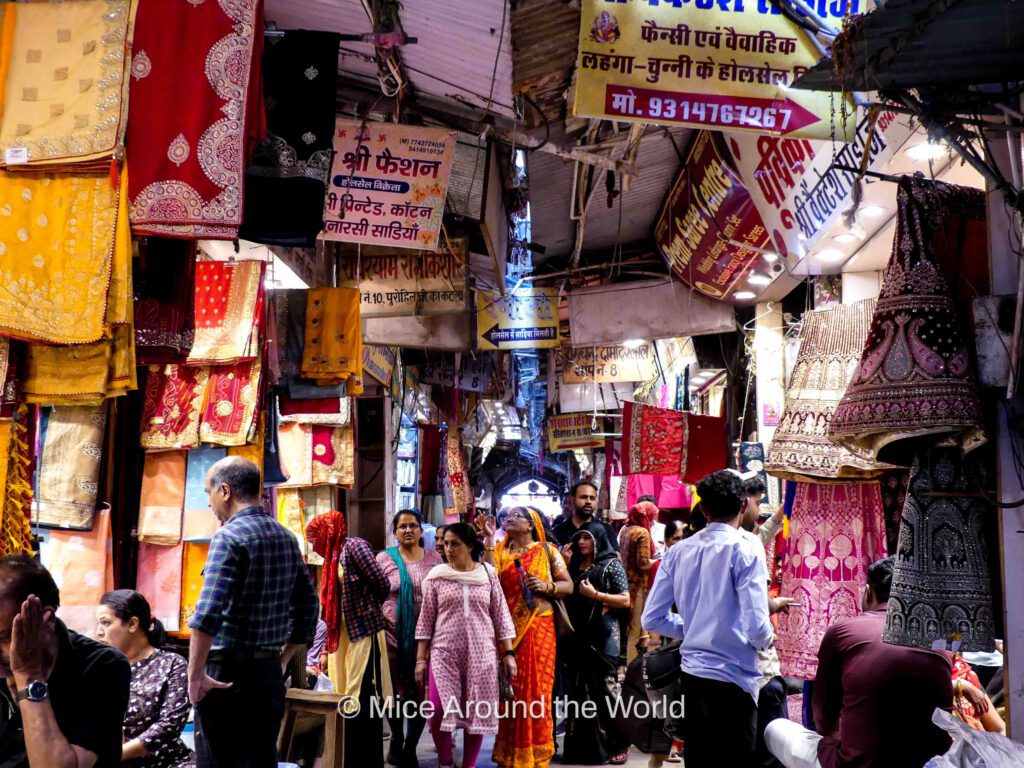

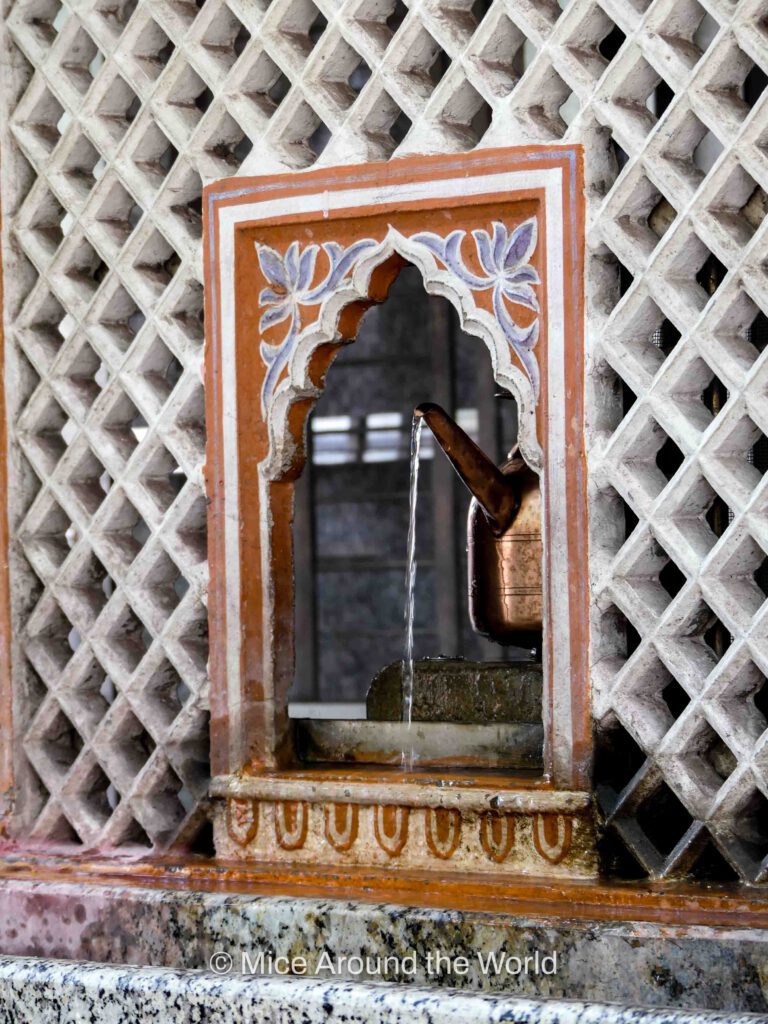
Visit the Galtaji ‘monkey’ temple
The Galtaji or also often named ‘monkey temple’ is a Hindu pilgrimage located about 10 kilometres east of Jaipur. The site consists of multiple temples surrounded by a natural spring that flows downs in several ‘kunds’ or tanks from the surrounding mountains. The water is considered sacred or holy. Galtaji is called the ‘monkey temple’ because many tribes of monkeys have made the complex their home. It’s a beautiful and fun temple to visit.
Although these creatures are fascinating to watch, be careful to approach them as they are keen on grabbing your food and other belongings.
Pay Attention: Be cautious when the monkeys carry babies, because we saw people got bitten. A monkey bite can be painful, especially in case the wound gets infected. In addition, there’s always a risk of catching Rabies, which is dangerous and can be deadly.
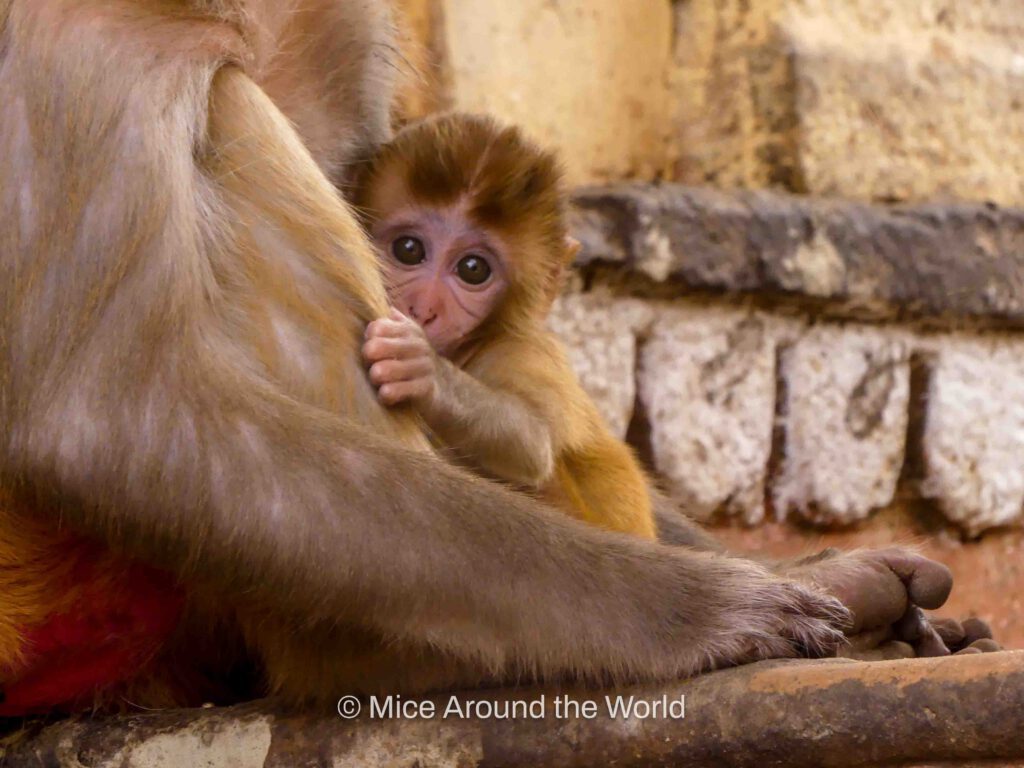
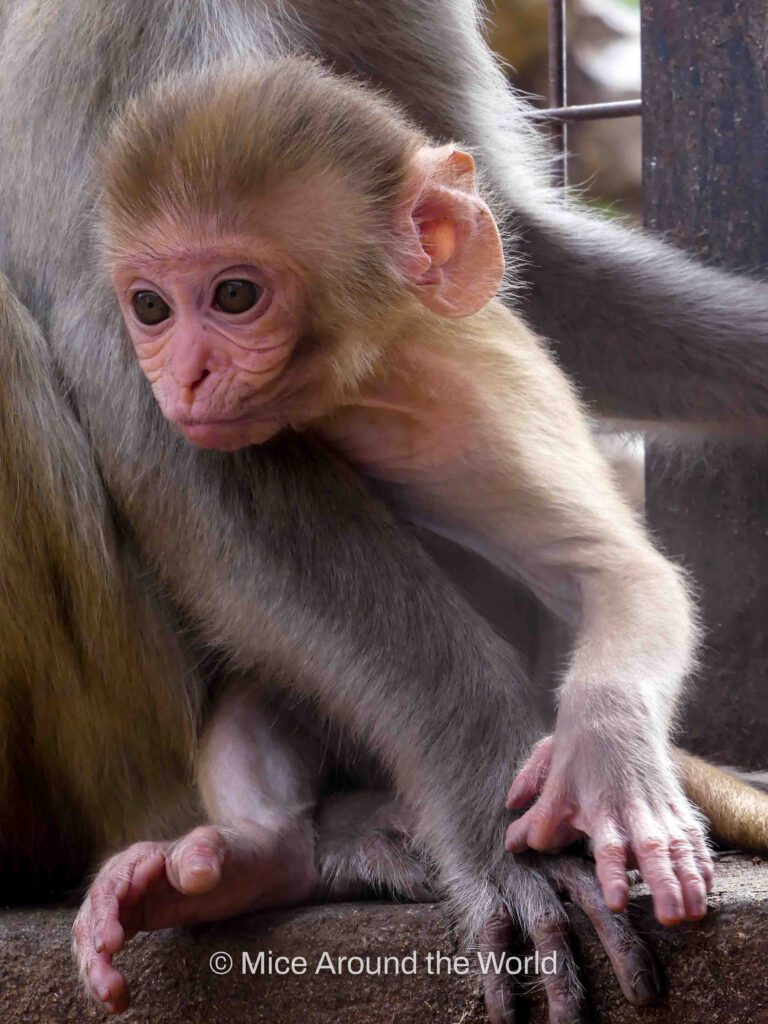
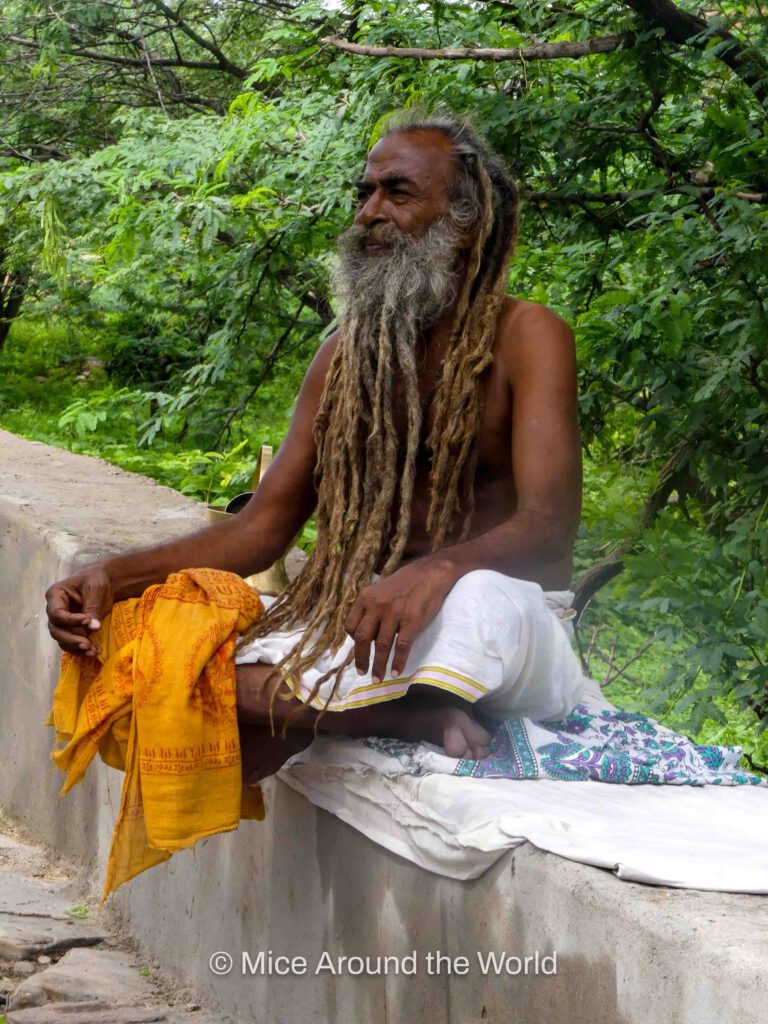
Other things to do
Jantar Mantar
Jantar Mantar is a collection of astronomical instruments built by Rajput king Sawai Jai Sing II, the founder of Jaipur. Jantar Mantar is a UNESCO World Heritage Site and features the largest stone sundial, a device that tells the time of the day based on the apparent position of the sun. Jantar Mantar is located in Jaipur’s city centre, just around the corner of Hawa Mahal and the City Palace. The entrance fee of c200, (about €2.20) is charged for foreigners.
City Palace
The Jaipur City Palace is located in the heart of the city near Hawa Mahal and the City centre and is best reached by taking the metro (there is only one line) to stations Chhoti Chaupar or Badi Chaupar. Its structure is a combination of Mughal and Rajput architecture. Until 1949, the City Palace was the ceremonial and administrative seat of the Maharaja of Jaipur. Nowadays, the building serves as a museum that has a library, textile gallery, armoury and royal collection. The present-day royal family of Jaipur still lives in an enclosed part of the City Palace. The entrance fee to the City Palace is ₹700 (around €7.75) and a 50% discount for children and students with a valid ID card.
Patrika Gate
Patrika Gate is located on the ‘Jawahar Circle’, a garden traffic circle located South close to the Jaipur International Airport. Patrika Gate was built in 2016 as a memorial to reflect on the cultural heritage and architectural style of Rajasthan. Patrika Gate’s design is an attempt to integrate all Rajasthan has to offer into one monument. Some photographers claim this is the most and best-photographed spot in the whole of India. The monument is free of entrance for everyone.
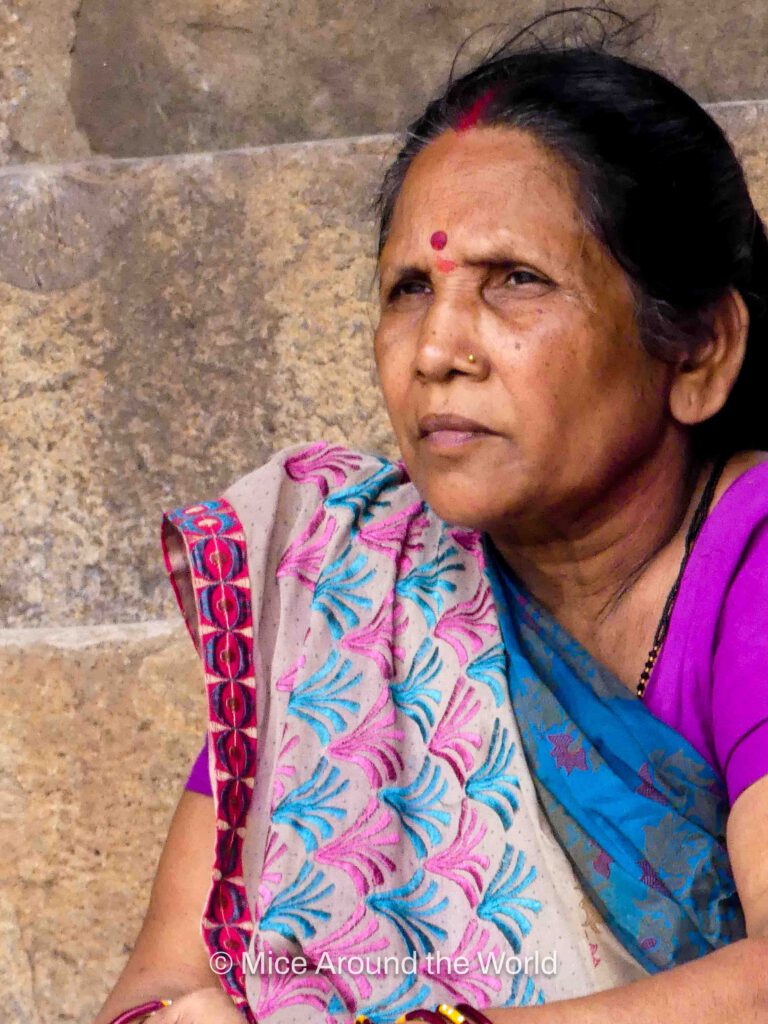
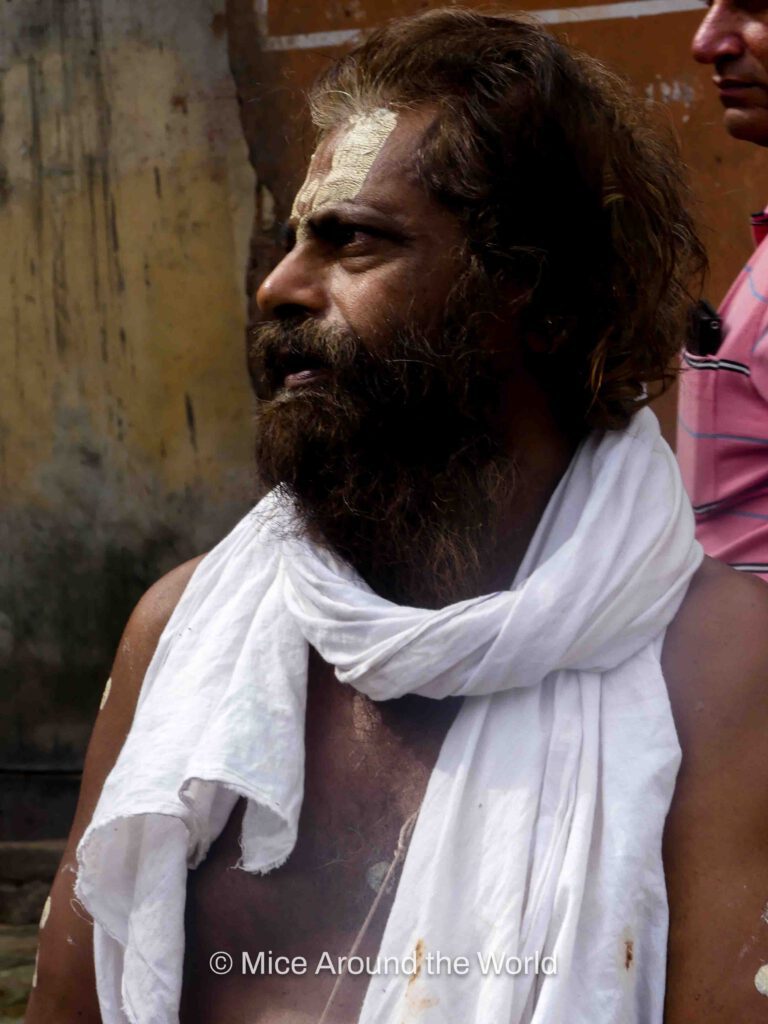
Plane
Jaipur has an international airport which serves flights from domestic as well as destinations in the region, including Bangkok and Dubai, Indigo being the largest domestic airline. If you book timely in advance, plane tickets are relatively cheap. The airport also offers short-distance flights to cities in the region like Delhi, Jodhpur and Udaipur.
Train
Jaipur is easily reachable by train from all directions, including New Delhi. In case you book your tickets online, make sure you book the 1st clas AC as these wagons are the most comfortable to travel. It is possible to charge your phone, stay cool and do some work in case you are a digital nomad. Make sure to get off at the right (main) station, as Jaipur has multiple.
Bus
We only booked a bus in India once from Jodhpur to Udaipur, and this was perfectly fine. Buses from and to Jaipur will probably have the same level of comfort. Just make sure you have read the reviews on the company first and checked whether the seats are for sitting or lying down, as the last one is way more comfortable. Get your tickets here.
We had a lovely stay in Hotel HR Palace near the main railway station, which location is a perfect base to discover Jaipur further. For Indian standards, the hotel was relatively expensive at a room rate of €35,- per night including a decent breakfast. The rooms were large and luxurious, although the Wi-Fi did not work all the time (which seemed the case in every hotel in India). The staff of the hotel was very friendly and served us with every need.
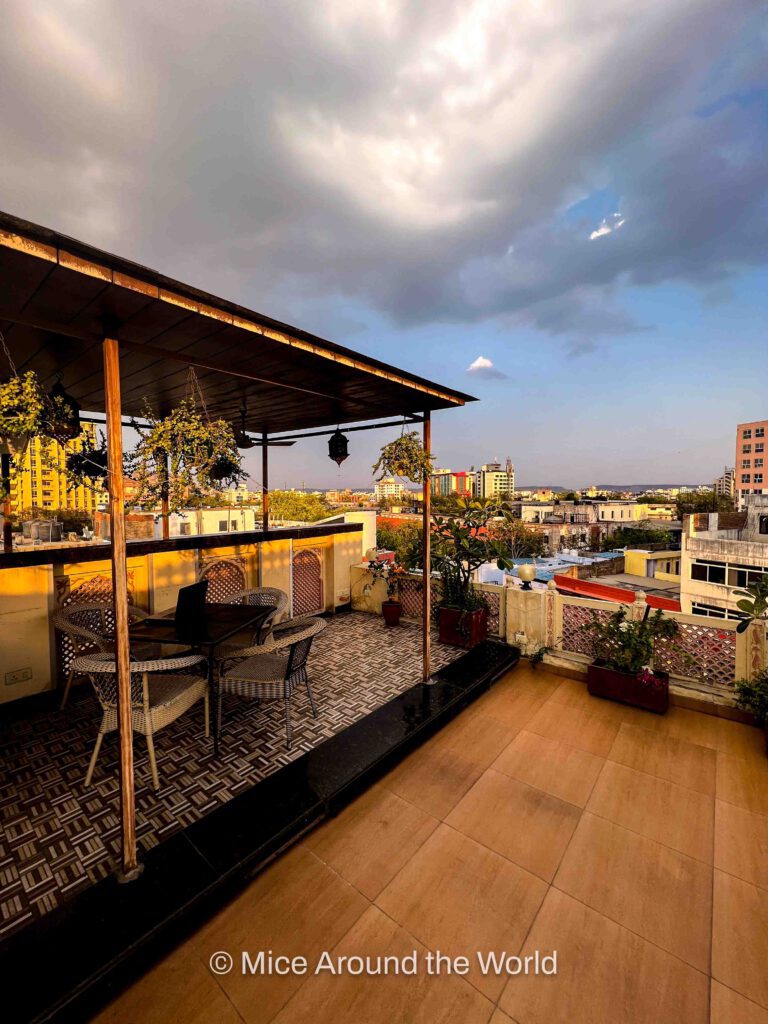
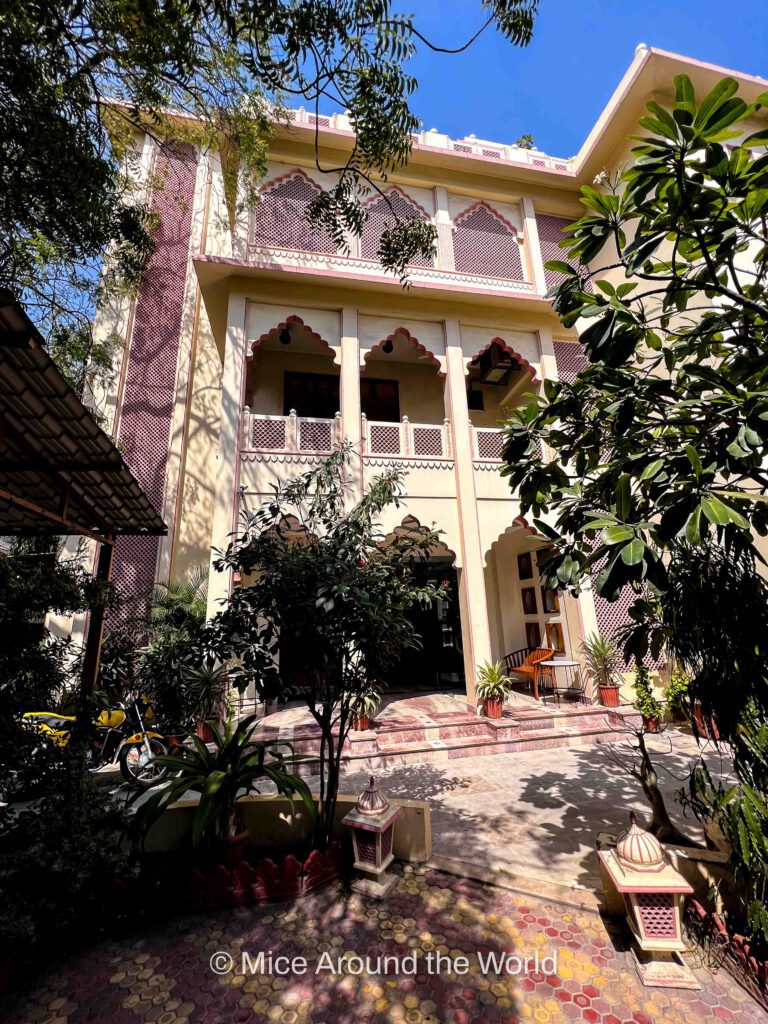
Another great place to stay in the family hotel Jaipur Inn Homestay. It’s slightly cheaper and with a cosy interior and a great location, this boutique hotel is great to stay when visiting Jaipur. Prices start from €22,- a night.
Jaipur has lots of restaurants offering a variety of Rajasthani cuisine, including the famous thali (rice and chapatis served on a metal platter along with several side dishes), curries, paneer and so on. It is possible almost everywhere to get a decent dinner, just be careful with raw vegetables, especially during hot and wet monsoon season.
Some of our recommendations:
- Cinnamon-Jai Mahal Palace
- Laxmi Misthan Bhandar
- Little Italy Jaipur
